Recent Articles
Popular Makes
Body Types
2015 Chevrolet Colorado / 2015 GMC Canyon Mid-Size Pickup First Drive and Review
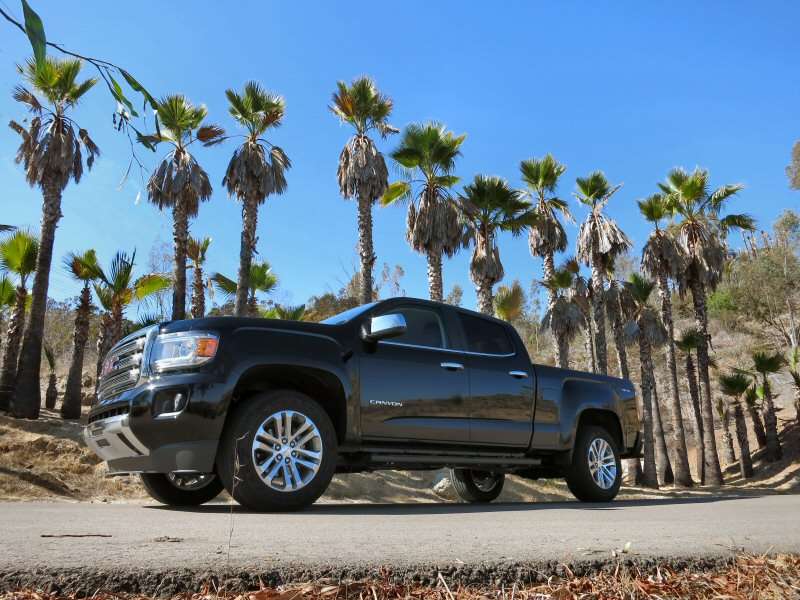
2015 GMC Canyon ・ Photo by Benjamin Hunting
In the desert wasteland that is the mid-size truck market, the 2015 Chevrolet Colorado and 2015 GMC Canyon appear like an oasis. Summoned from overseas to be thoroughly re-worked for an American audience and stand beside decade-old options from Toyota (the Tacoma) and Nissan (the Frontier), the Colorado and the Canyon represent a gamble from GM: specifically, that there exists a portion of the truck-buying public who are underserved not just by current entry-level models but also by the full-size juggernauts that dominate the industry.
Neither Chevrolet nor GMC buy-in to the standard argument trotted out whenever the state of the mid-size truck industry is lamented. 'Who wants a pickup that can’t match the towing and hauling capacity of a larger model but offers very little additional fuel efficiency advantage or cost savings to compensate for its reduced practicality?' goes the old refrain. The answer, according to GM, can be found in the many customers out there who are shopping for a vehicle that fits their active lifestyle, one that drives more like a crossover than a truck but provides the versatility of an open pickup bed and the ability to tow the occasional trailer. They aren’t looking to get behind the wheel of one of the gargantuan land-monsters that modern full-size haulers have evolved into, and don’t have the space to park one even if they were.
It’s a compelling – and risky – position for a manufacturer to take. After having driven both the Chevrolet Colorado and the GMC Canyon in and around the coastal community of Del Mar, California, it also feels like the right one.
Same Names, Different Faces
If the Colorado and Canyon names sound familiar to you, that’s because they are: the previous generation of entry-level trucks offered by General Motors featured identical monikers. However, it’s important to understand that there are no links between the 2015 Chevrolet Colorado and the 2015 GMC Canyon and their predecessors, as each truck rides on a completely new platform and offers a fresh range of drivetrain choices.
Styling has also moved forward with these latest mid-size trucks, and substantial effort has been made to ensure that one wouldn’t mistake the Chevy for the Jimmy, even at a glance. While the Colorado features a sporty front fascia with a sleek bumper and grille treatment, the Canyon is a much more upright affair and makes plenty of use of the same squared-off, bold design seen on the larger GMC Sierra. Inside the two trucks it’s easier to find similarities, but even within the cabin the seats, gauge clusters, and trim are distinguishable between the two brands. Equipment and features packaging has also been used to further separate the Canyon from the Colorado; the GMC offers a slightly higher level of gear at each price point (and is concomitantly a bit more expensive at the outset) and both Chevy and GMC deliver their own takes on what an off-road package should provide (Z71 and All Terrain, respectively).
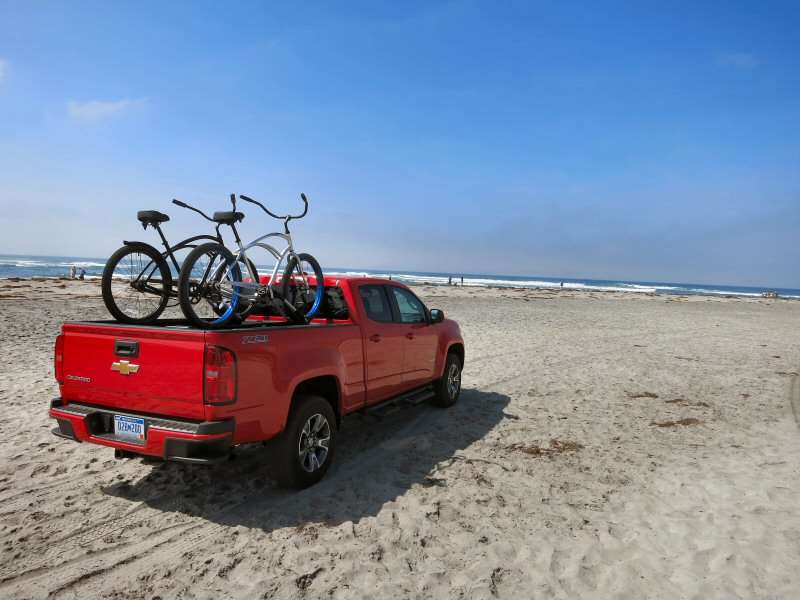
Photo by Benjamin Hunting
A Pair Of Pleasing Drivetrains
Mechanically, the Chevrolet Colorado and the GMC Canyon are twins. This means that each starts out with a 2.5-liter four-cylinder as their entry-level engine, a unit that is good for 200 horsepower and 191 lb-ft of torque. If you stick with the base GMC or W/T Chevrolet trims you can even order a six-speed manual transmission, but the vast majority of trucks will be outfitted with a six-speed automatic (standard on all other editions of either vehicle). Fuel mileage for the auto-equipped 2.5-liter models is listed at 20-mpg city and 27-mpg highway, and towing capacity shows as 3,500 lbs. You can also get four-wheel drive with the four-cylinder trucks.
More output is available from an available 3.6-liter V-6 that churns out 305 horses and 269 lb-ft of twist. A six-speed autobox is the only gearbox available with this particular motor, and four-wheel drive remains an option. Towing capacity for the six-cylinder pickup doubles to 7,000 lbs – which is class-leading, according to GM – and fuel economy drops almost insignificantly to 18-mpg around town and 26-mpg during highway cruising for two-wheel drive models. This is due in part to the decision to include active aerodynamic features such as grille shutters across the GMC and Chevrolet mid-size line-up, along with the use of direct fuel injection on both engines and variable-valve timing for the V-6. For hypermiling torque-lovers, there’s also a 2.8-liter turbodiesel four-cylinder slated to make it into showrooms next year.
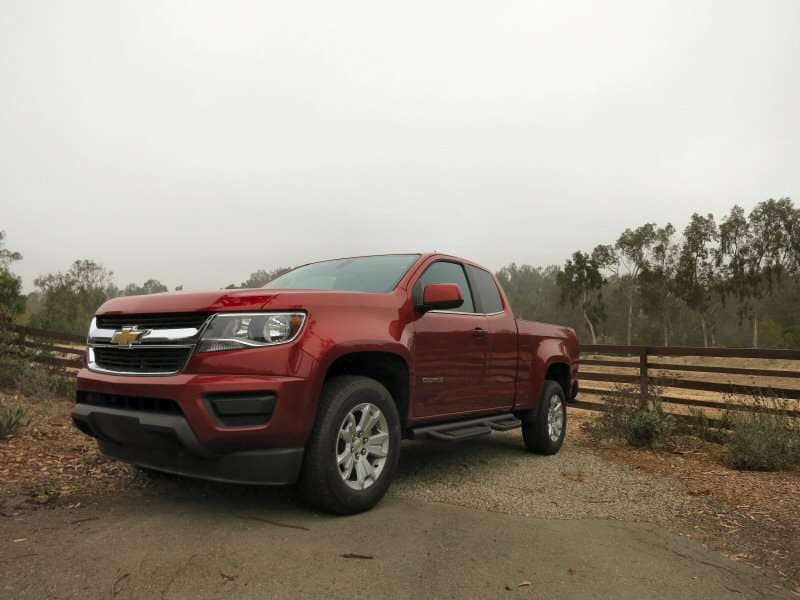
Photo by Benjamin Hunting
Crossover-Like Ride
Bargain-seekers and fleet managers will be happy to know that the 2.5-liter four-cylinder is quite effective at motivating the Colorado and the Canyon, and although it’s noisier than one would prefer at higher RPMs, it pulls its own weight as a lightly-loaded runabout. That being said, given the single-mpg difference in fuel efficiency between the four-cylinder and the V-6, it’s my recommendation to swing the 3.6-liter if you can afford the cost of the upgrade, as this opens up a whole new world of towing and hauling for the two trucks.
The V-6 GMC Canyon that I drove swiftly dispatched the 4,500 lbs of boat and trailer hanging off of its rear bumper regardless of whether the transmission was set to tow/haul mode or not. I wouldn’t go so far as to call the pickup’s performance as ‘effortless’ when so-laden – there was some deep breathing required to accelerate to highway speeds up a fairly steep hill – but in all other circumstances I rarely notice that the boat was back there. Given that Americans tow, on average, no more than 3,500 lbs on a regular basis, the 7,000 lb limit affixed to the Chevrolet and the GMC is more than enough to handle the majority of trailering needs.
More important than the brute strength of the six-cylinder Colorado and Canyon was the compliant character exhibited by both in normal driving. The suspension of each truck has been tuned to the point where I barely notice the live axle sitting out back, and the electric power steering system added an easy-to-steer feel to the experience of piloting the pickups. In fact, I never really had the sensation that I was driving a ‘smaller’ truck – rather, it was more reminiscent of piloting a similarly-sized crossover, especially when negotiating urban traffic. The more-manageable footprint of each model also made the Chevrolet and GMC a cinch to park. The only real complaint I had concerning my time behind the wheel had to do with the automatic transmission, which seemed reluctant to kick me down to a low gear without at first offering me an intermediate ratio.
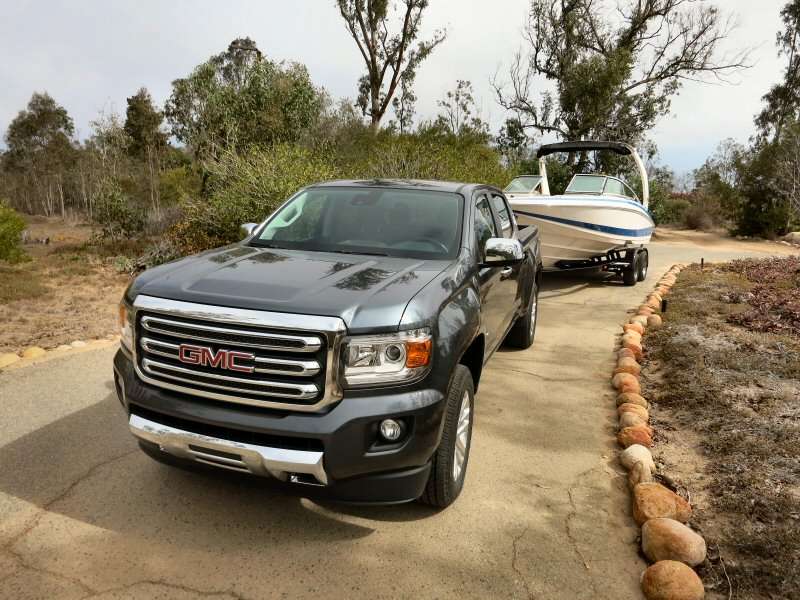
Photo by Benjamin Hunting
Bring The Family
Compounding the crossover-like nature of the 2015 Chevrolet Colorado and the 2015 GMC Canyon is the available crew cab body style, which featured four full-size doors that provide access to a genuinely roomy cabin. In a world where full-size trucks have become behemoths it seems to have been forgotten that one can be comfortable inside the rear seat of a pickup without five feet of demilitarized zone running through the middle of the passenger compartment. I had plenty of room in the second row, and I think only the very tall will have any complaints about riding behind the driver.
The extended-cab versions of these mid-size offerings are a different story. The fold-down seats behind the first row present the briefest amount of legroom and are arranged in a posture that’s not all that welcoming. There’s a set of rear-hinged doors that open up to what you should really consider as an over-sized trunk that’s useful for storing items you don’t want to leave exposed to the elements. For everything else you might want to bring along the extended cab trucks come with a six-foot, two-inch cargo box, while crew cab models can be ordered with an bed that’s a full foot shorter.
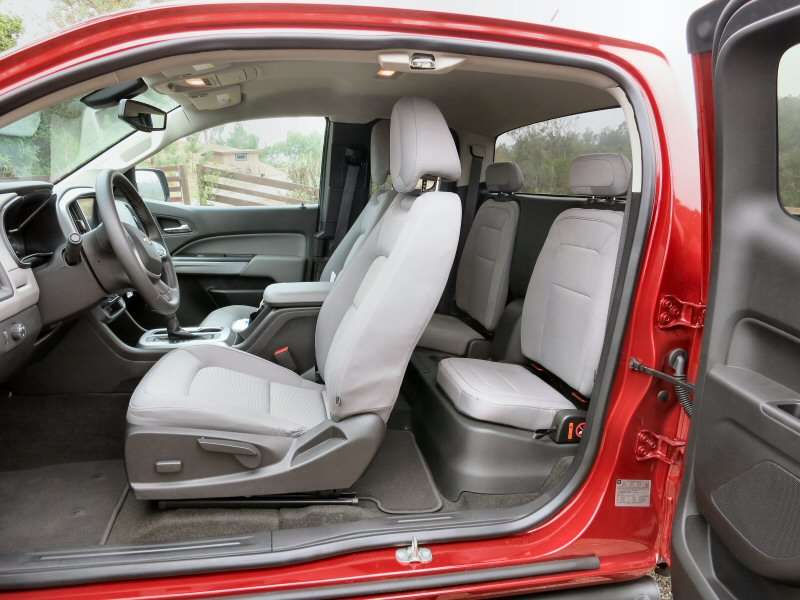
Photo by Benjamin Hunting
Achievement Unlocked: Hi-Tech Pickups
General Motors has been rolling out its 4G LTE wireless Internet hotspot technology across a wide range of vehicles and the Colorado and the Canyon are no exception. This subscription-based service allows the trucks to serve as Wi-Fi hotspots while out on the road, and combines well with the Chevrolet MyLink / GMC IntelliLink touchscreen entertainment and communications interfaces available with either model. You can also order a package that includes advanced safety equipment such as a forward collision warning system and a lane departure warning system. None of these features were even conceived of when the current Toyota and Nissan mid-size trucks were first brought to market, and they remain unavailable on any other vehicle in the segment.
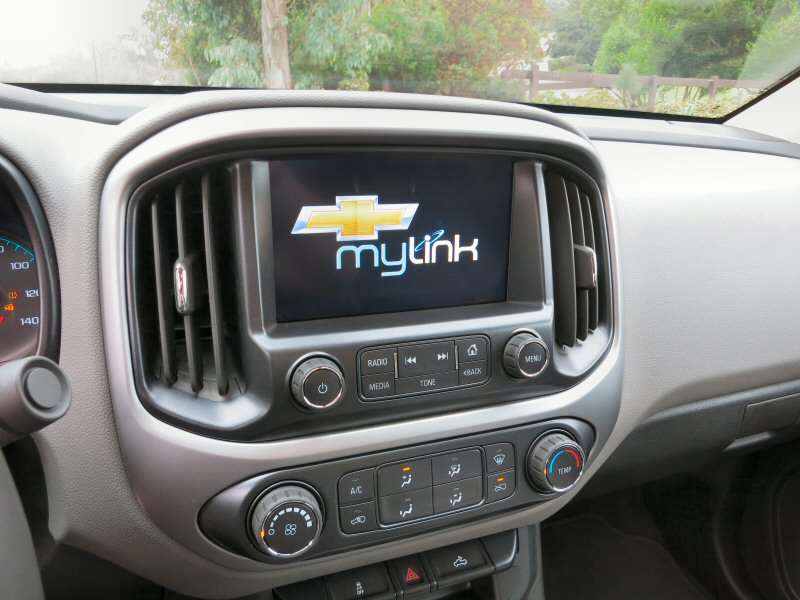
Photo by Benjamin Hunting
Kings Of The Hill
The 2015 GMC Canyon and 2015 Chevrolet Colorado have effectively taken over the mid-size truck world. To say that they enjoy an unfair advantage over their only two rivals in this sleepy corner of the pickup market would be an understatement: it’s more like the Canyon and the Colorado have walked onto a medieval battlefield carrying laser weapons. Vaporizing the Tacoma and the Frontier isn’t exactly the point of these two excellent trucks from GM, however – the idea is instead to serve the buyers that everyone has overlooked for far too long and coax a fair number of these potential customers out of their crossovers and SUVs into a smaller truck that is versatile while offering none of the penalties typically associated with larger pickups. This updated philosophy should go a long way towards putting butts in seats (and kayaks and bicycles in cargo beds) at GMC and Chevrolet dealerships.
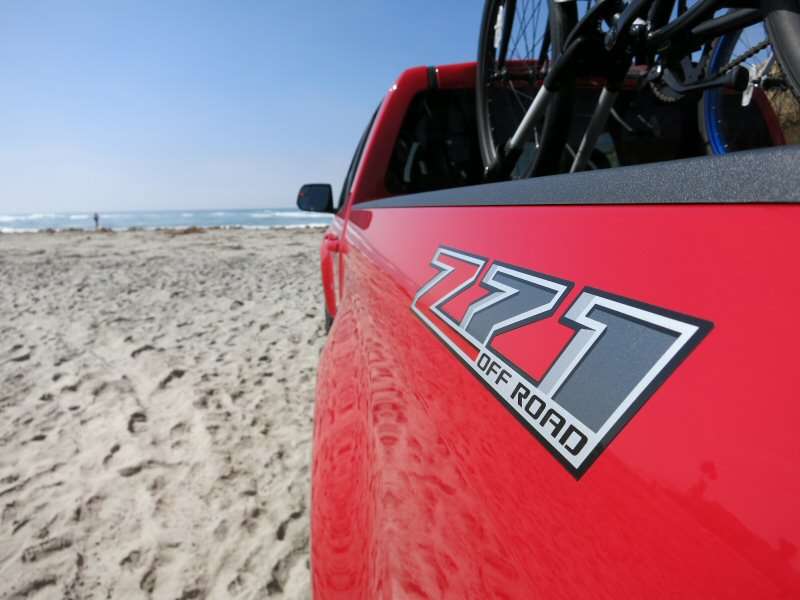
Photo by Benjamin Hunting